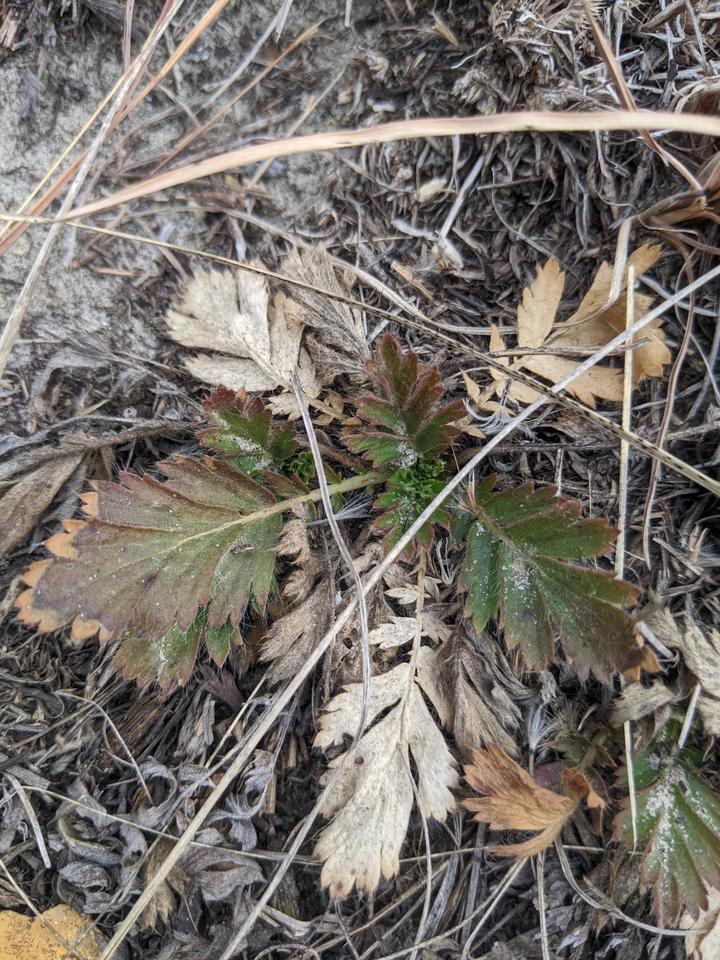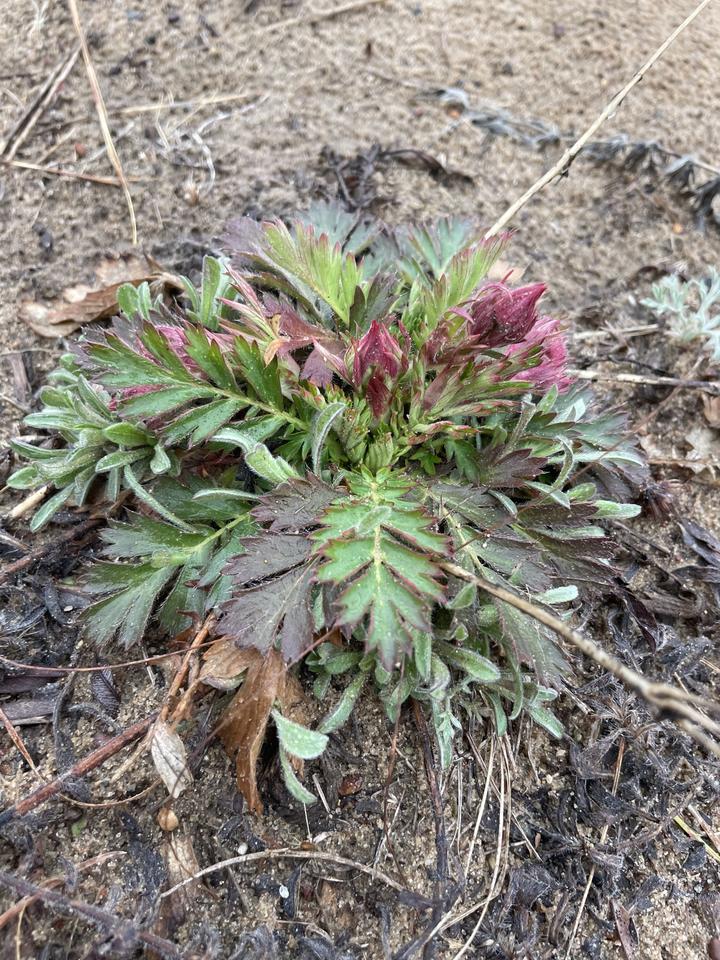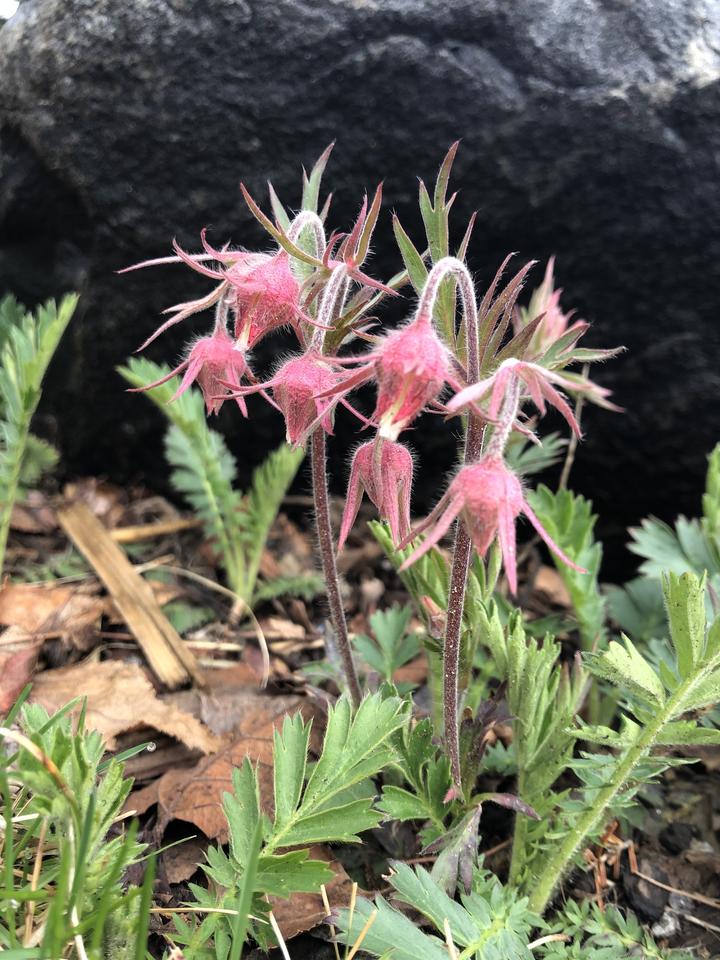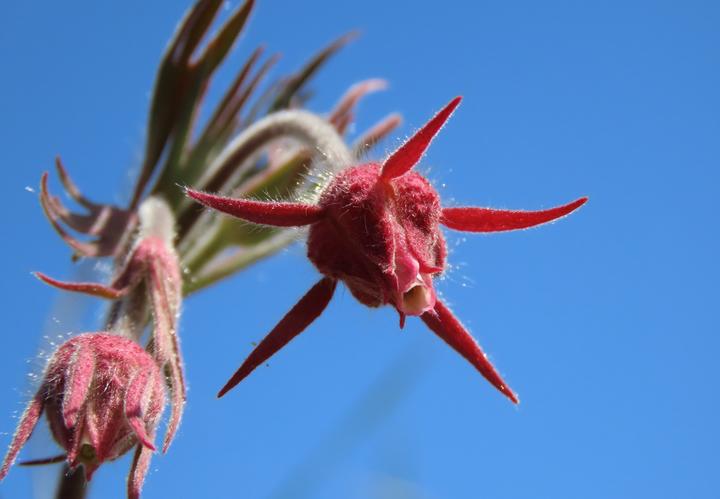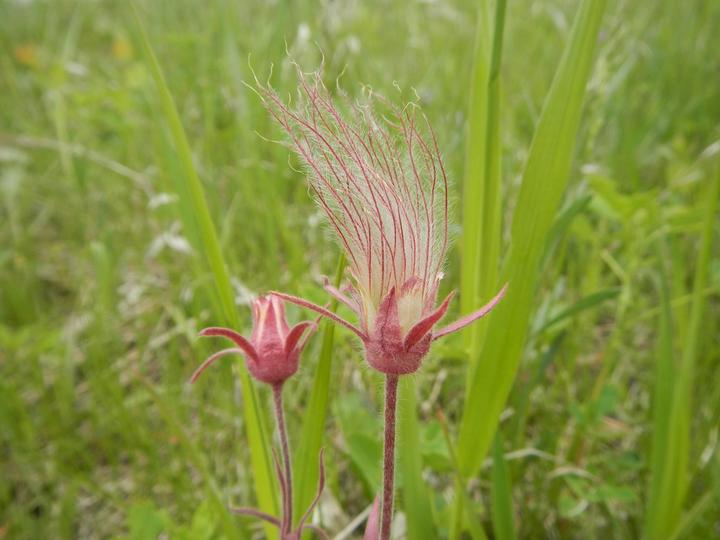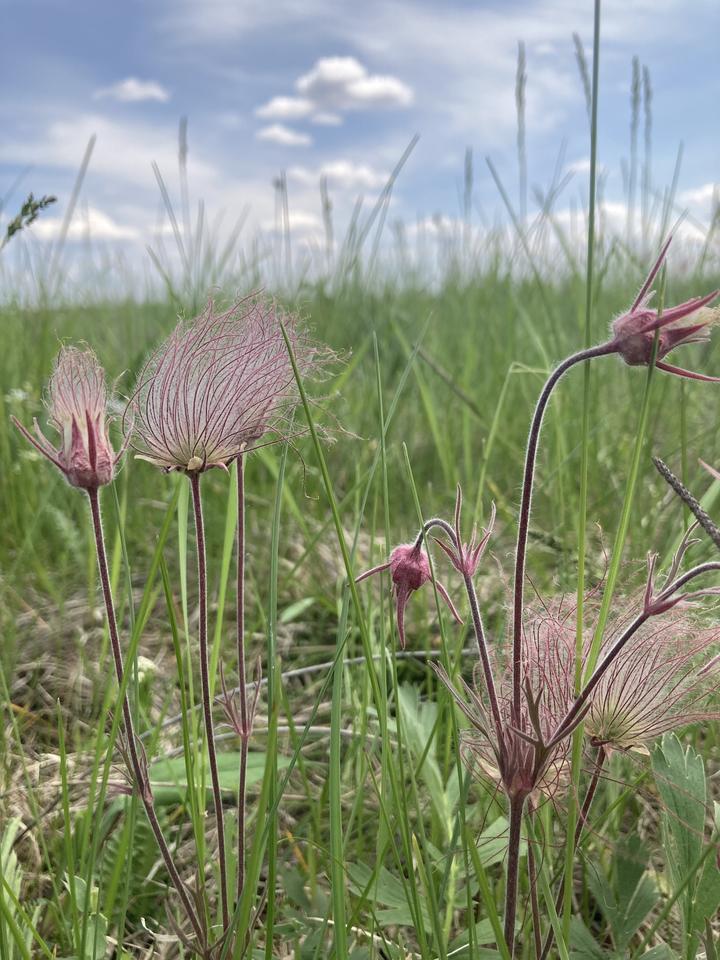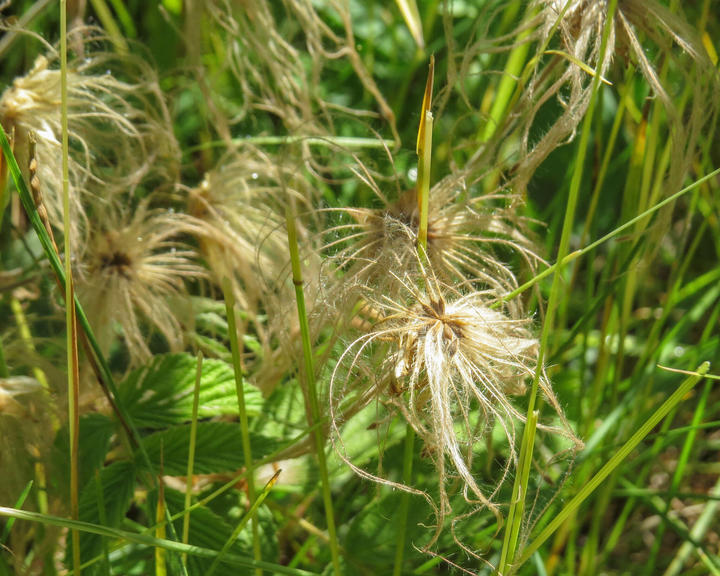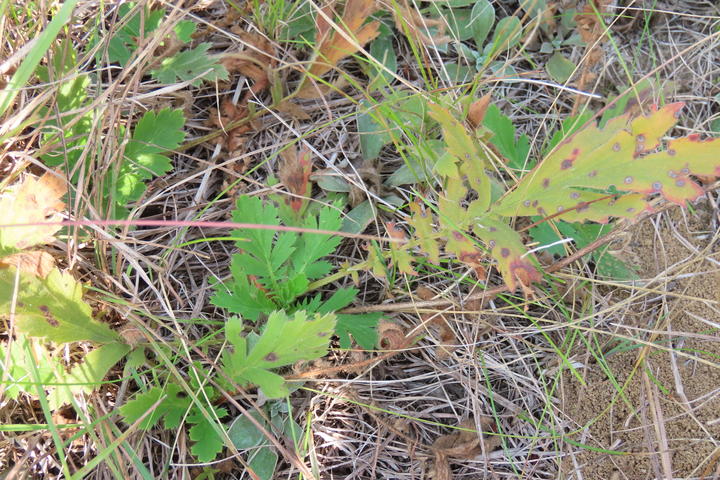More names for this plant
The Dakota and Anishinaabe were among the earliest people to name Minnesota’s plants and animals, as well as to understand them in relation to Minnesota’s climate and seasons. Those original names are still in use, and several are included on the Season Watch website. However, complete translations were not available.
Latin (or scientific name): Geum triflorum
The scientific community has a convention of assigning agreed-upon Latin names to every kind of organism. Using scientific names helps people communicate confidently about the same organism and organize lifeforms based on how closely related they are.
More common names: Old man's whiskers
Page contents
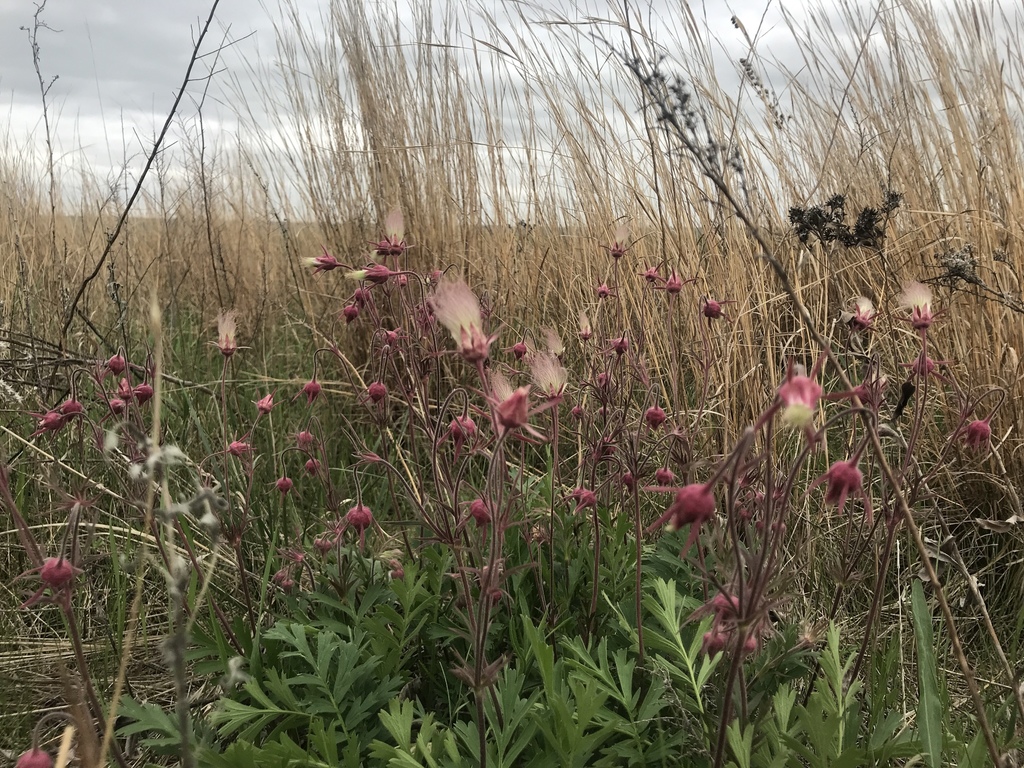
May 19, 2018, Washington County, Minnesota
Photo © birdchick, some rights reserved (CC-BY-NC)
iNaturalist observation
About prairie smoke
- Prairie smoke is a native perennial wildflower that grows six to sixteen inches tall.
- From April to June, it has blossoms with three red, purple, or brown flowers atop a hairy stem.
- Its leaves grow close to the ground and can be four to eight inches long. The leaves are hairy and divided into seven or more wedge-shaped leaflets.
- Prairie smoke's fruit is a dry seed attached to a feathery plume. Clusters of these plumes resemble smoke blowing in the wind.
- It is one of the first prairie flowers to bloom in spring, making it an indicator of the start of Minnesota's growing season.
Visual guide to phenology
Watch for the appearance of leaves, flowers, and fruits. Take notice of when flowers open and fruits ripen.
Note to observers
This page explains general clues to watch for when observing prairie smoke phenology. However, this page does not explain how to identify this plant or collect data in a standardized way.
- For help with identification, see Minnesota Wildflowers.
- For guidance on collecting data, see Nature’s Notebook.
Graphs and historical data
Note: The Orientation Center provides a map, as well as information on reading graphs; interpreting summary statistics, who collected the data and how; and how to download datasets for independent exploration.
Flowering
- Earliest: April 17 (occurred in 1958 and 1963)
- Average: May 6
- Latest: May 25 (occurred in 1968)
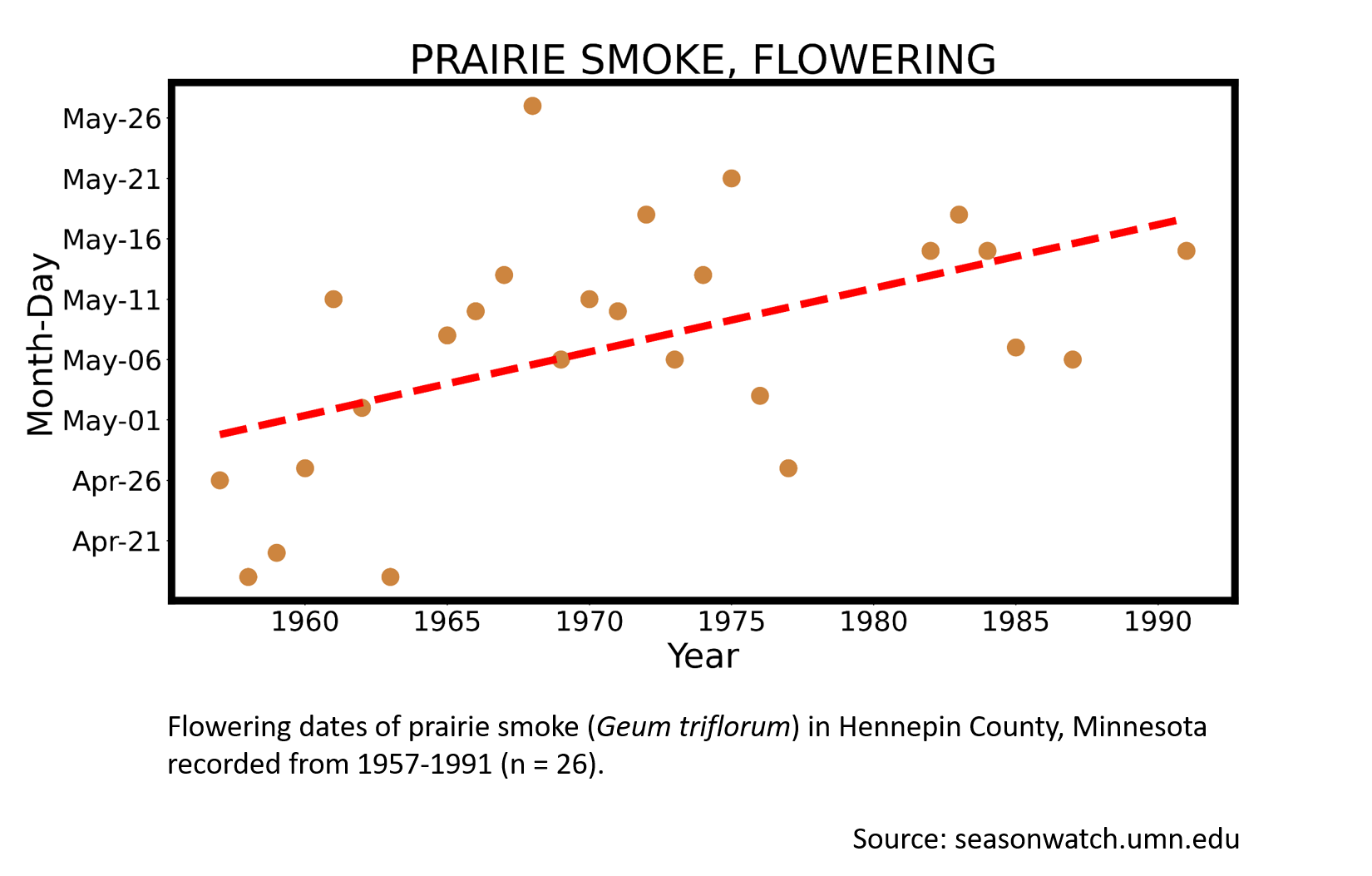
Last flower
- Earliest: May 14 (occurred in 1957)
- Average: June 6
- Latest: June 20 (occurred in 1968 and 1974)
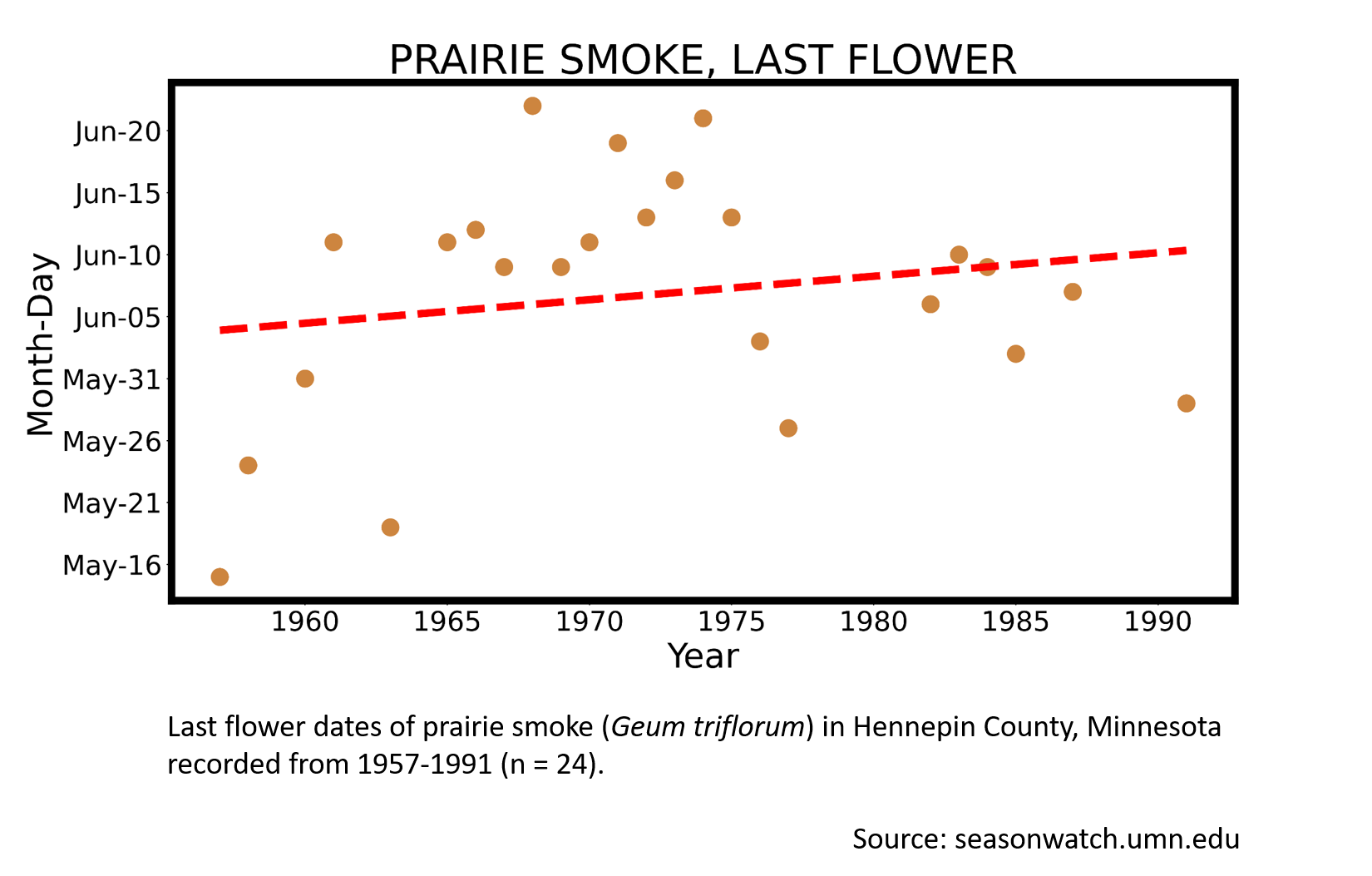
Keep exploring Season Watch
Keep exploring Season Watch
Co-author: Jayme Hogan, Minnesota Master Naturalist
